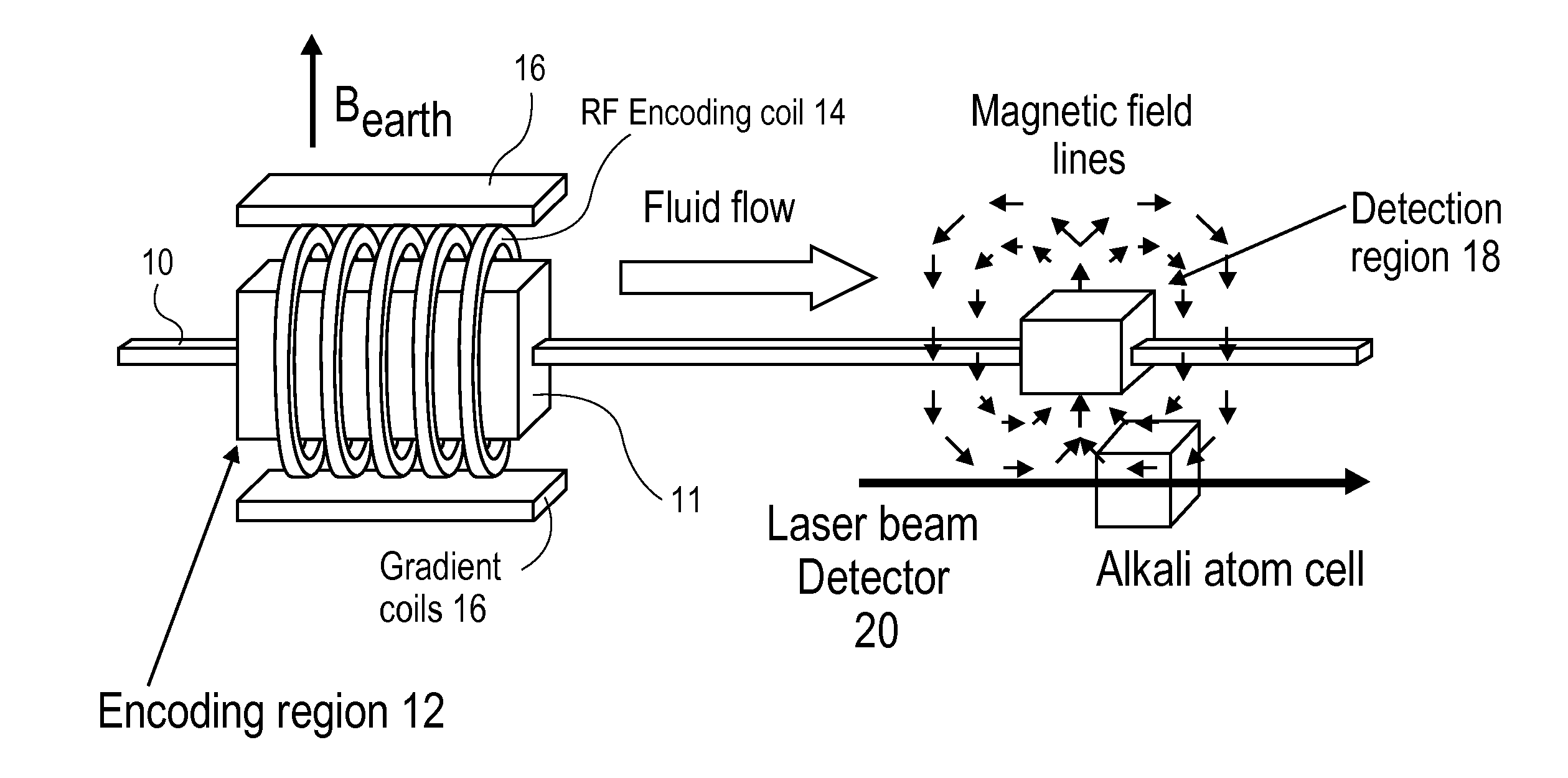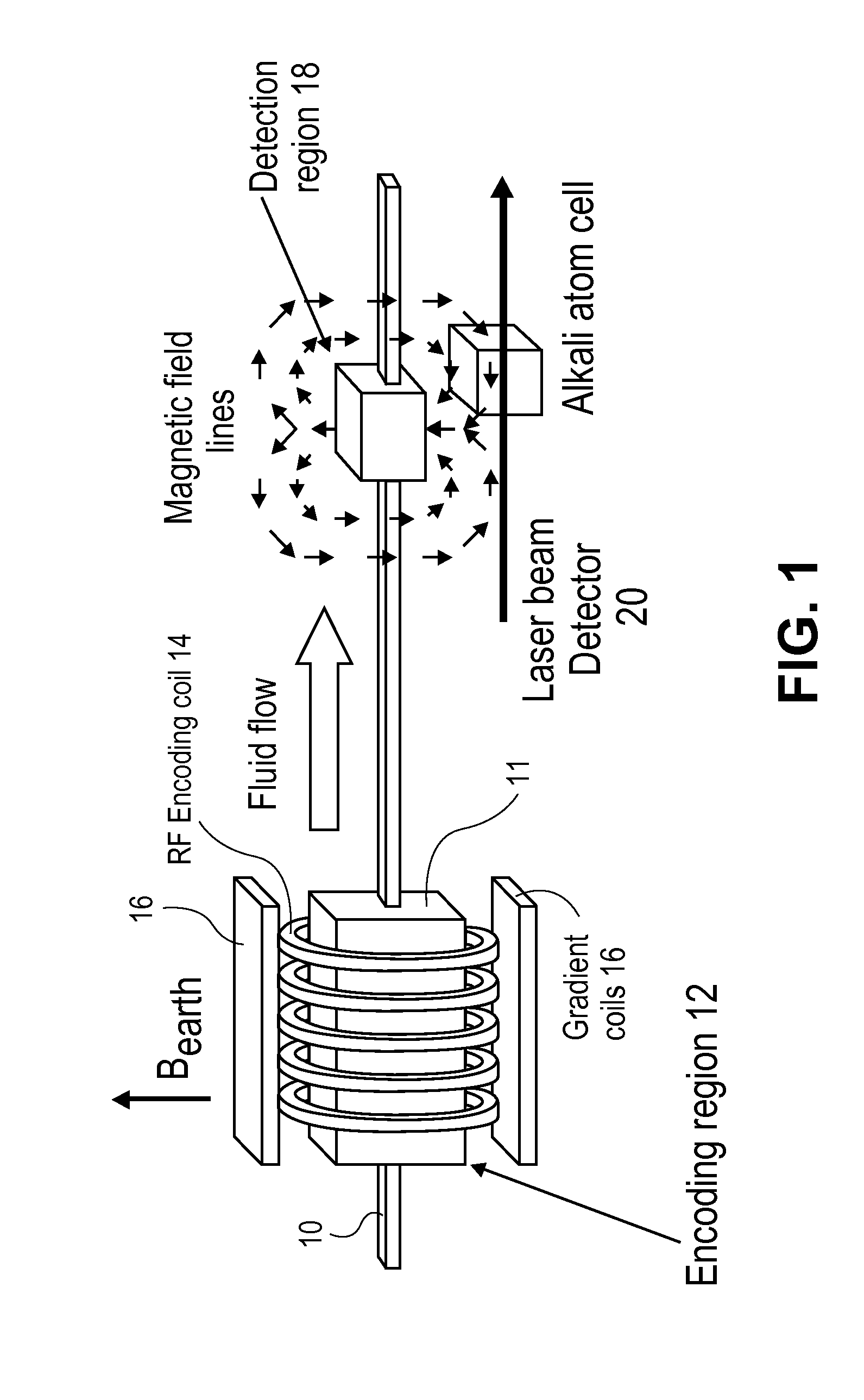Magnetic resonance imaging of living systems by remote detection
- Summary
- Abstract
- Description
- Claims
- Application Information
AI Technical Summary
Benefits of technology
Problems solved by technology
Method used
Image
Examples
Embodiment Construction
[0018]Presented herein is a novel approach to magnetic resonance imaging (MRI) of living systems which provides complementary information about morphology and flow not normally obtained with convention MRI. This approach measures flow by the time of arrival of the flowing substance at a remote location, using a detector placed at a remote location. It can also be used for three dimensional imaging. In an embodiment, the method of this invention is particularly well suited for example for MRI of the brain.
[0019]The flow of blood is one of the most important properties of, and a critical process in living animals. It regulates temperature, nutrition and function of the tissues, providing critical nutrients and oxygen, and removing waste CO2 and other metabolites. Understanding blood flow and changes in it is important for understanding both normal functions and disease processes. MRI is one of the best available methods to date to provide information about blood flow in the brain. Des...
PUM
 Login to View More
Login to View More Abstract
Description
Claims
Application Information
 Login to View More
Login to View More - R&D
- Intellectual Property
- Life Sciences
- Materials
- Tech Scout
- Unparalleled Data Quality
- Higher Quality Content
- 60% Fewer Hallucinations
Browse by: Latest US Patents, China's latest patents, Technical Efficacy Thesaurus, Application Domain, Technology Topic, Popular Technical Reports.
© 2025 PatSnap. All rights reserved.Legal|Privacy policy|Modern Slavery Act Transparency Statement|Sitemap|About US| Contact US: help@patsnap.com



